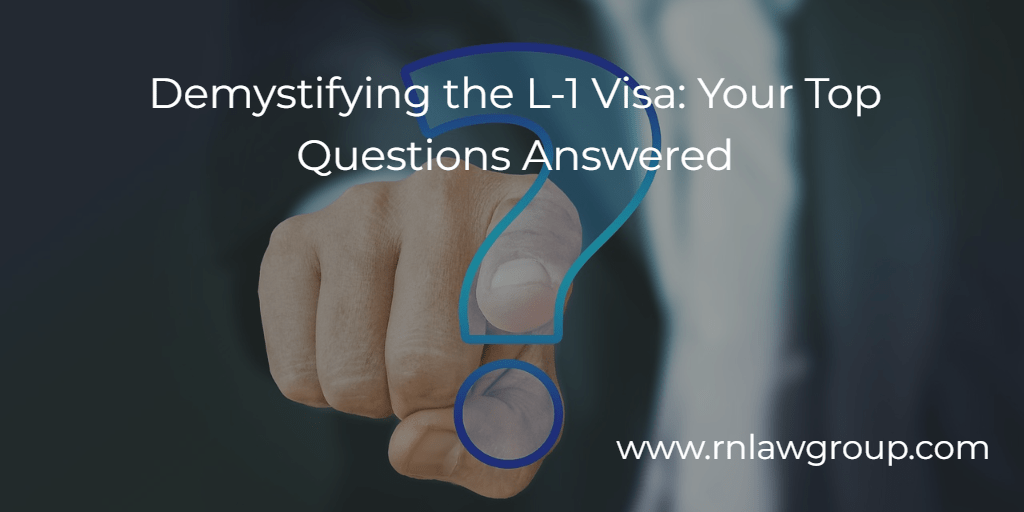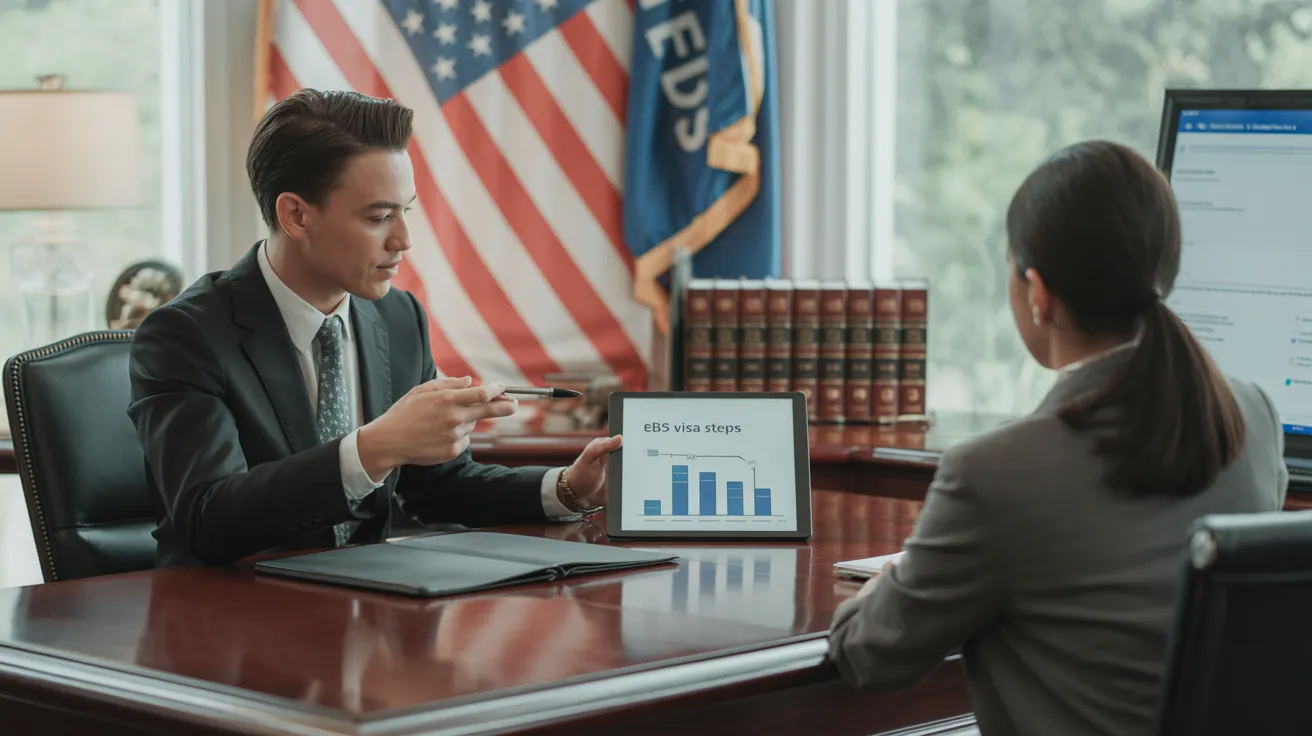Apply for L1 Visa
Facts About L1 Visa Uncovered
Table of ContentsThe 2-Minute Rule for L1 VisaThe Ultimate Guide To L1 VisaAn Unbiased View of L1 VisaL1 Visa - TruthsL1 Visa Things To Know Before You Get ThisThe Main Principles Of L1 Visa
Available from ProQuest Dissertations & Theses Worldwide; Social Science Premium Collection. (2074816399). (PDF). Congress. (PDF). DHS Office of the Assessor General. (PDF). (PDF). "Nonimmigrant Visa Stats". Gotten 2023-03-26. Department of Homeland Safety Office of the Assessor General, "Evaluation of Susceptabilities and Possible Abuses of the L-1 Visa Program," "A Mainframe-Size Visa Technicality".
United State Department of State. Recovered 22 August 2016. "Workers paid $1.21 an hour to mount Fremont tech firm's computers". The Mercury Information. 2014-10-22. Retrieved 2023-02-08. Costa, Daniel (November 11, 2014). "Little-known short-lived visas for international tech employees dispirit earnings". The Hill. Tamen, Joan Fleischer (August 10, 2013). "Visa Holders Replace Workers".
The 4-Minute Rule for L1 Visa
In order to be qualified for the L-1 visa, the international business abroad where the Recipient was used and the U.S. business need to have a qualifying partnership at the time of the transfer. The various types of qualifying connections are: 1. Parent-Subsidiary: The Moms and dad implies a company, firm, or other legal entity which has subsidiaries that it has and controls."Subsidiary" suggests a company, company, or other legal entity of which a parent has, directly or indirectly, even more than 50% of the entity, OR owns much less than 50% but has monitoring control of the entity.
Instance 1: Company A is included in France and uses the Beneficiary. Firm B is included in the U.S. and intends to petition the Beneficiary. Firm A has 100% of the shares of Company B.Company A is the Parent and Business B is a subsidiary. There is a qualifying partnership in between the two business and Firm B must be able to fund the Beneficiary.
Business A possesses 40% of Company B. The continuing to be 60% is possessed and controlled by Company C, which has no connection to Business A.Since Company A and B do not have a parent-subsidiary connection, Business A can not fund the Recipient for L-1.
Example 3: Firm A is incorporated in the united state and intends to request the Beneficiary. Firm B is included in Indonesia and employs the Recipient. Firm A has 40% of Company B. The continuing to be 60% is had by Business C, which has no relation to Business A. Nevertheless, Firm A, by official contract, controls and complete manages Company B.Since Company An owns less than 50% of Company B but takes care of and manages the business, there is a qualifying parent-subsidiary partnership and Business A can fund the Recipient for L-1.
An Unbiased View of L1 Visa
Affiliate: An associate is 1 of 2 subsidiaries thar are both possessed and regulated by the exact same moms and dad or person, or had and managed by the same team of individuals, in generally the very same proportions. a. Instance 1: Company A is integrated in Ghana and utilizes the Beneficiary. Firm B is included in the U.S.
Business C, additionally included in Ghana, has 100% of Company A and 100% of Business B.Therefore, Firm A and Business B are "associates" or sister companies and a certifying partnership exists in between both companies. Company B need to be able to fund the Recipient. b. Instance 2: Business A is incorporated in the united state
Firm A is 60% owned by Mrs. Smith, 20% owned by Mr. Doe, and 20% possessed by Ms. Brown. Company B is included in Colombia and presently utilizes the Recipient. Company B L1 Visa guide is 65% possessed by Mrs. Smith, 15% possessed by Mr. Doe, and 20% possessed by Ms. Brown. Business A and Firm B are affiliates and have a qualifying connection in 2 various methods: Mrs.
The L-1 visa is an employment-based visa classification established by Congress in 1970, allowing multinational companies to transfer their managers, executives, or essential employees to their united state procedures. It is generally described as the intracompany transferee visa. There are 2 main types of L-1 visas: L-1A and L-1B. These kinds appropriate for staff members worked with in various positions within a company.

In addition, the beneficiary needs to have worked in a supervisory, exec, or specialized staff member setting for one year within the 3 years preceding the L-1A application in the international business. For brand-new workplace applications, foreign work must have been in a supervisory or executive capacity if the recipient is coming to the USA to work as a supervisor or exec.
L1 Visa for Dummies

If approved for a united state firm operational for more than one year, the preliminary L-1B visa is for approximately three years and can be extended for an extra two years (L1 Visa). On the other hand, L1 Visa law firm if the united state firm is newly developed or has been operational for much less than one year, the initial L-1B visa is provided for one L1 Visa attorney year, with expansions available in two-year increments
The L-1 visa is an employment-based visa classification developed by Congress in 1970, allowing multinational firms to transfer their managers, execs, or vital workers to their united state procedures. It is typically described as the intracompany transferee visa. There are two major types of L-1 visas: L-1A and L-1B. These types are suitable for workers hired in various placements within a firm.
L1 Visa for Beginners
Furthermore, the recipient needs to have functioned in a supervisory, exec, or specialized employee setting for one year within the three years coming before the L-1A application in the international business. For new workplace applications, foreign work needs to have remained in a managerial or executive ability if the recipient is concerning the United States to work as a manager or executive.
for up to 7 years to oversee the operations of the U.S. associate as an exec or supervisor. If provided for an U.S. company that has actually been functional for even more than one year, the L-1A visa is originally provided for approximately 3 years and can be expanded in two-year increments.
If approved for a united state firm functional for greater than one year, the initial L-1B visa is for as much as three years and can be extended for an extra 2 years. Conversely, if the U.S. business is freshly established or has been functional for less than one year, the initial L-1B visa is released for one year, with extensions offered in two-year increments.